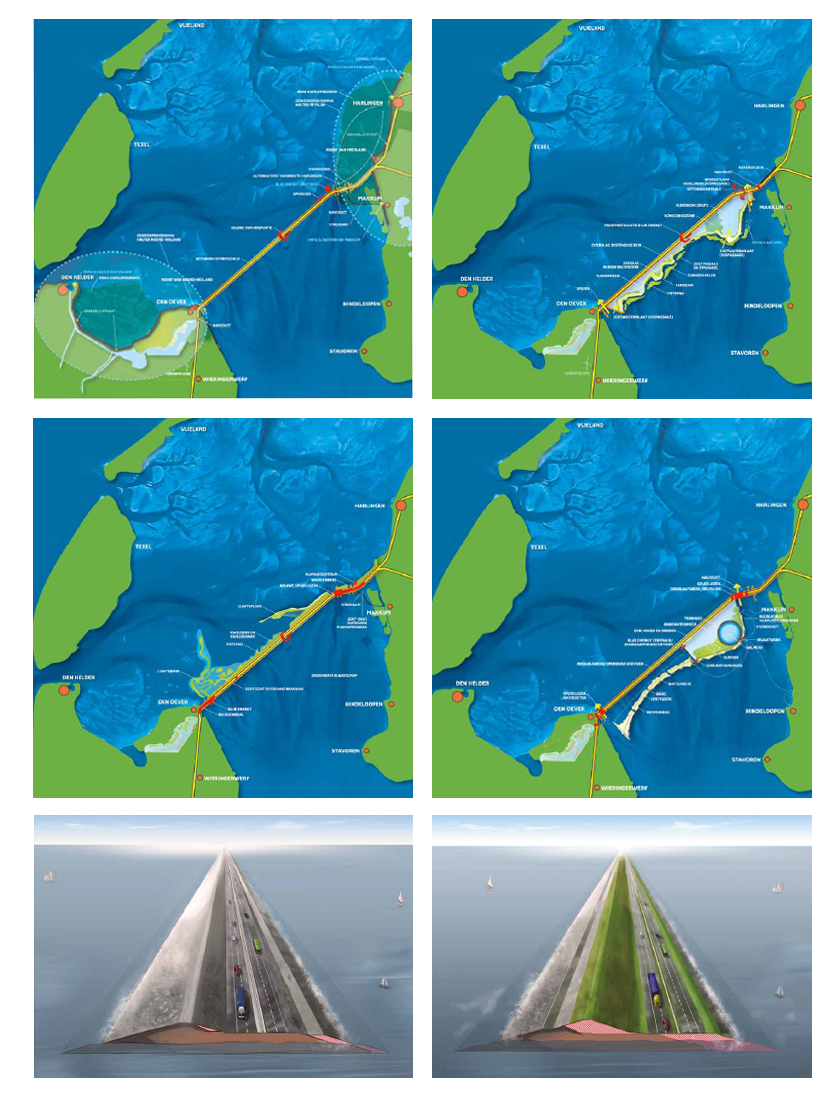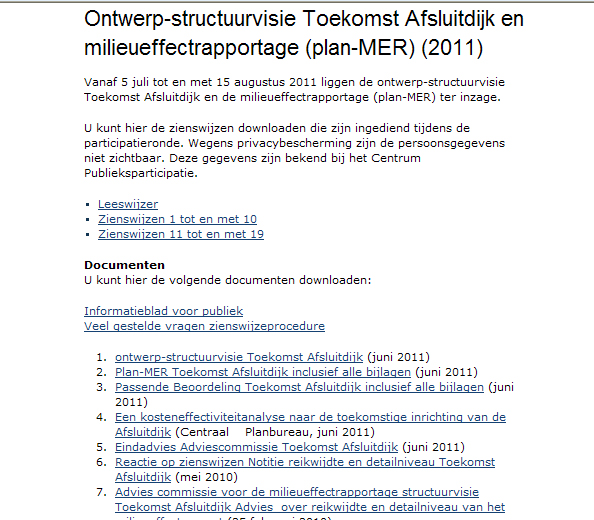Drawing with water - I've not even thought about this option. Yet Karen Maes made…
Water over the dike
There exists such a thing as the Structuurvisie Toekomst Afsluitdijk – a Structural View on the Future of the Afsluitdijk. It is published on the website of the Center for the Public’s Participation, inviting the public to react before the Structural View goes to the council of ministers for a decision.
This is the Polder Model at its best, with lots of committees, experts, civil servants, stakeholders, pressure groups and politicians adding ingredients to the soup that’s brewing. And after a lot of deliberation six options were presented (see further below), four by consortia of builders, two basic ones by the government.
These plans have been published over the summer of 2011, and formal reactions were sought, documented and dealt with. Out of curiosity, I checked who would avail themselves of such a major opportunity. Here goes:
private persons: 8
towns: 2
provinces: 3
pressure groups: 5
building consortiums: 1
Not a whole lot – then again all possible parties and their neighbours have already been made part of the advisory process.
Then what happened? The cabinet, wanting value-for-money, went for the minimum scenario. This is a scenario in which the dike is to be strengthened so it does not break when a storm whips water over it. The idea of allowing for water coming over a dike – any dike at all – is rather new. Until now, we’ve built bigger and better dikes almost reflexively.
So the dike and both it’s sluices are to be strengthened. Additional measures to be decided on around 2050 – what fools we mortals would be if climate change were to prove a chimera!
Even though I did not exercise my hereditary right to be heard, I can live with this solution. I admire the Afsluitdijk for its austerity, loving its length and the quality of the light that plays on it. So this particular cabinet decision is fine with me.

| « Nix | <-- previous post | next post --> | Dove circle, Dam square » |
|---|








